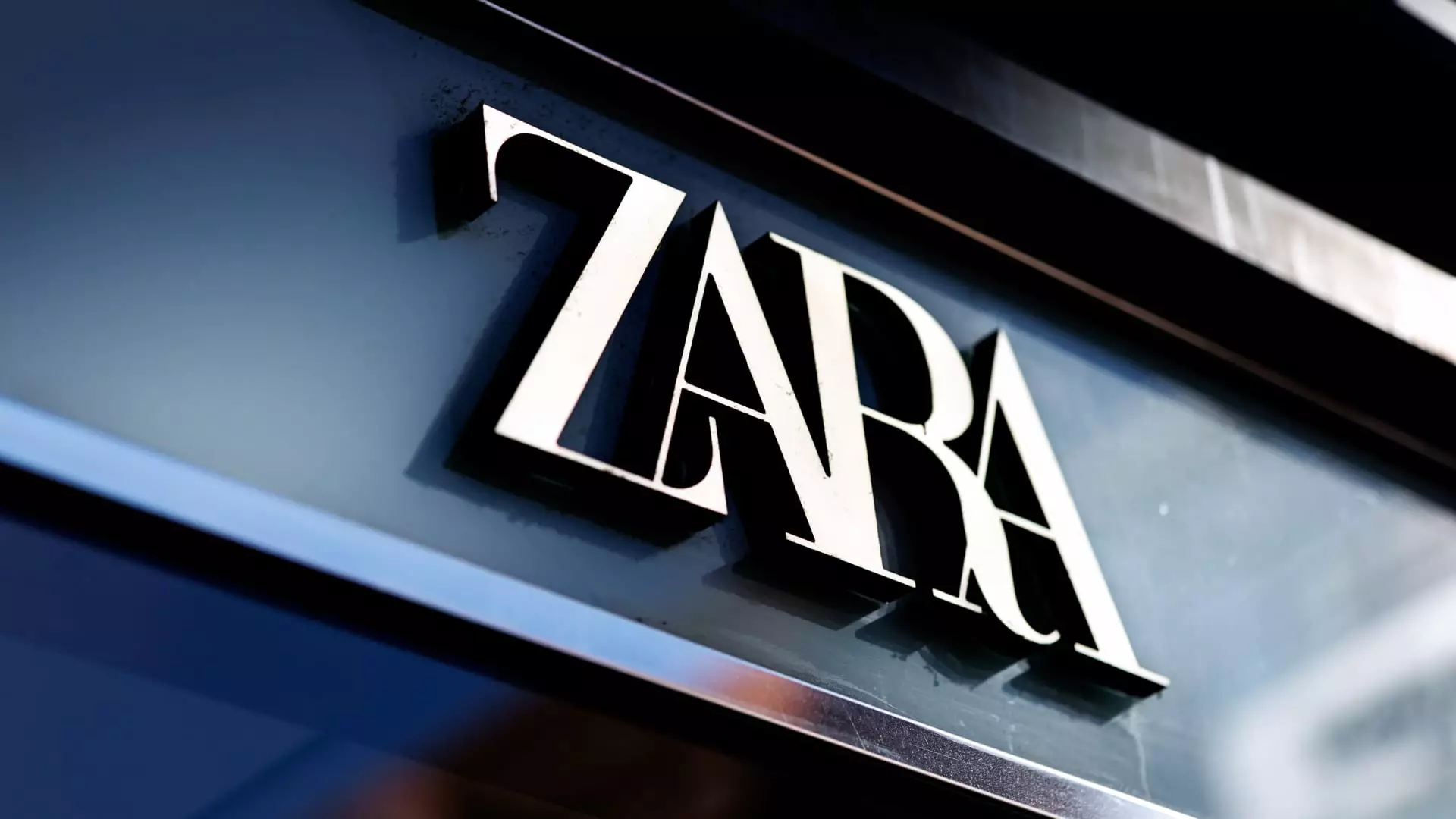Inditex, the parent company of Zara, has recently found itself in the eye of an economic storm. The latest quarterly earnings report, revealing revenues of 8.27 billion euros, fell short of analyst expectations by a hair’s breadth. Such a modest miss can easily spiral into a significant market panic, proven by the subsequent drop of 4.4% in shares. This reaction illustrates a broader sentiment—a combination of apprehension regarding economic stability and heightened expectations that often accompany a global retail giant like Inditex. A 4.4% dip may appear modest at first glance; however, it signifies deeper concerns about consumer sentiment in the current landscape.
The figures indicate not just a quarterly performance hiccup but potentially a signal of a more systemic issue. With net income slipping just under projected figures, investors are grappling with the implications of these results. All this adds up to an unsettling picture of a company that has long been viewed as a fortress amid fluctuating market conditions. Doubts are setting in, and for an institution that prides itself on adaptability, the question looms: Are these just growing pains or an eventual decline?
Economic Uncertainty and Consumer Behavior
As Inditex braces for a seemingly difficult summer, the economic backdrop provides little solace. The company has flagged a slowdown in growth, reporting merely a 6% increase in sales from May 1 to June 9, a significant drop from the 12% seen during the same timeframe last year. Such figures are indicative of shifting consumer dynamics and broader economic uncertainties. Investors need more than just a quarterly report to decipher the true health of a retail giant; they must interpret these statistics through the lens of consumer behavior, which is evidently shifting.
It’s pivotal to recognize the prevailing mood among consumers, who are increasingly hesitant to spend amidst rising living costs and the specter of inflation. Tariffs, particularly those imposed on imports from China, add another layer of complication. Gorka García-Tapia Yturriaga underscored the uncertainty surrounding consumer spending patterns as the company seeks a middle path within these turbulent economic waters. The reality is that retail success thrives on consumer confidence, and when that confidence starts to wane, even the most robust retailers can find themselves in treacherous waters.
Industry Dynamics and Competitive Pressures
Inditex has historically been a leader in the industry, often outperforming competitors like H&M. However, looming over it is a growing number of challengers in the fast-fashion arena, notably disruptors like Shein and Temu. The retail landscape is swiftly evolving, and the pressure from lower-cost alternatives is reaching fever pitch. This evolution could potentially alter the very fabric of high street giants like Inditex.
Despite possessing a competitive edge in terms of diversity and operational flexibility, the reality is that increased competition from price-sensitive alternatives could trigger a market revaluation of Inditex’s worth. Does it still command the premium price that investors have assigned to it, or is it merely a reflection of past glories now giving way to the relentless march of disruptors? The question is not just whether they can control their market fate but how well they can adapt and redefine themselves amidst these changes.
Forward-Looking Strategies and Stakeholder Confidence
Inditex’s leadership is making attempts to forge a path forward, highlighting global growth opportunities and a diversified supply chain that encompasses various continents. It’s a strategy aimed at counterbalancing the impacts of economic erraticism. The company’s assertion that flexibility is key may provide reassurance; however, it depends significantly on execution and the ability to pivot quickly in a rapidly changing market.
Despite the ambitious outlook, Mamta Valechha from Quilter Cheviot cautions that these results could incite further debate regarding the company’s future growth trajectory. The retail giant, previously heralded as an icon of resilience, may now have to earn back that title as analysts seek to uncover whether Inditex can navigate these shifting sands successfully—a task complicated by an uncertain economic landscape and increasing competition.
As the company steps into uncertain waters, the upcoming quarters will be crucial. Here lies an opportunity not only to showcase its renowned adaptability but also to reaffirm whether Inditex is indeed equipped to lead in the face of turbulent change. Investors and consumers alike will be watching closely, ready to respond to whatever cues may arise from the retail titan’s evolving story.

